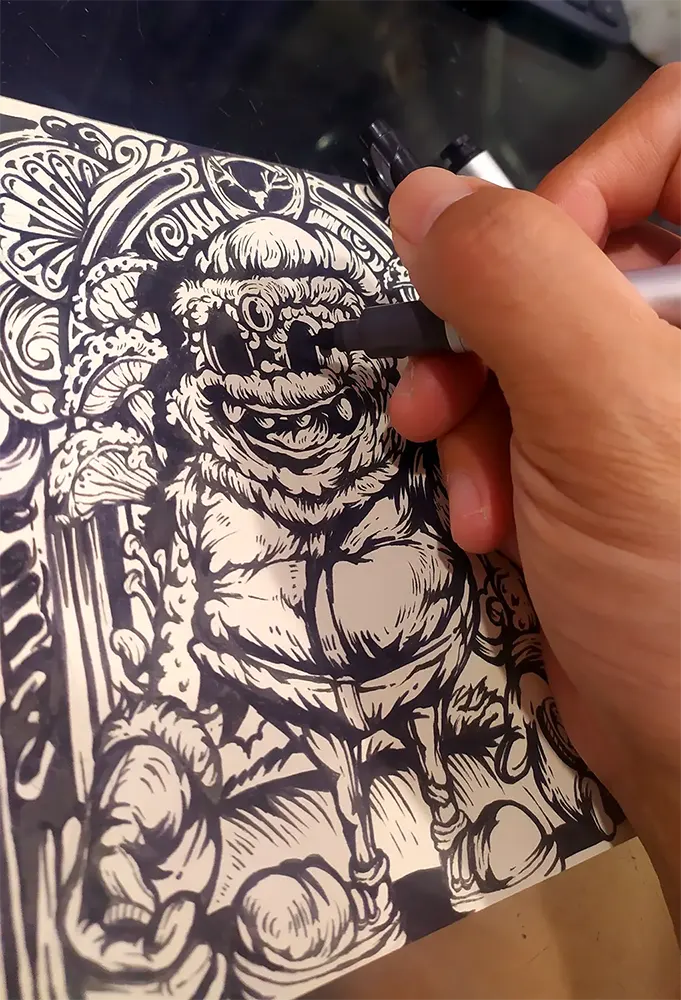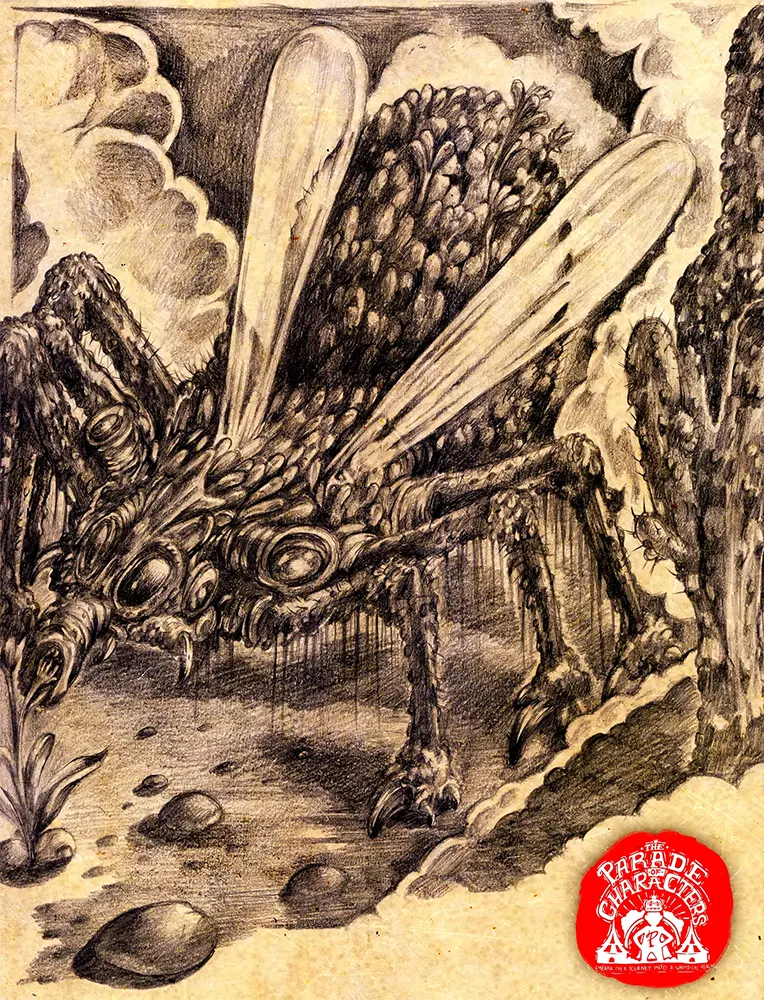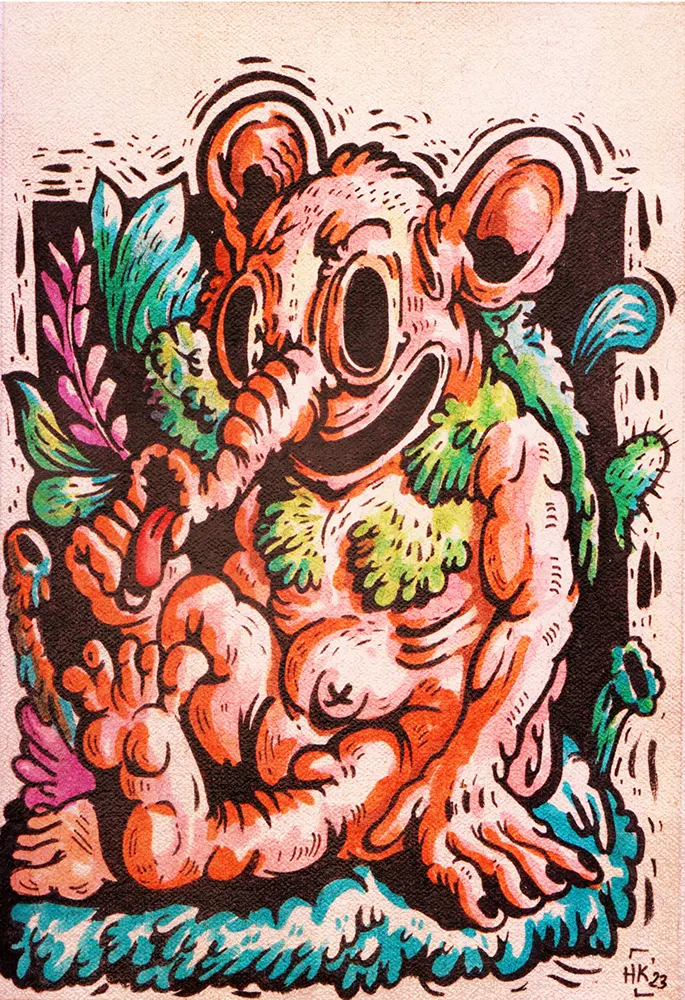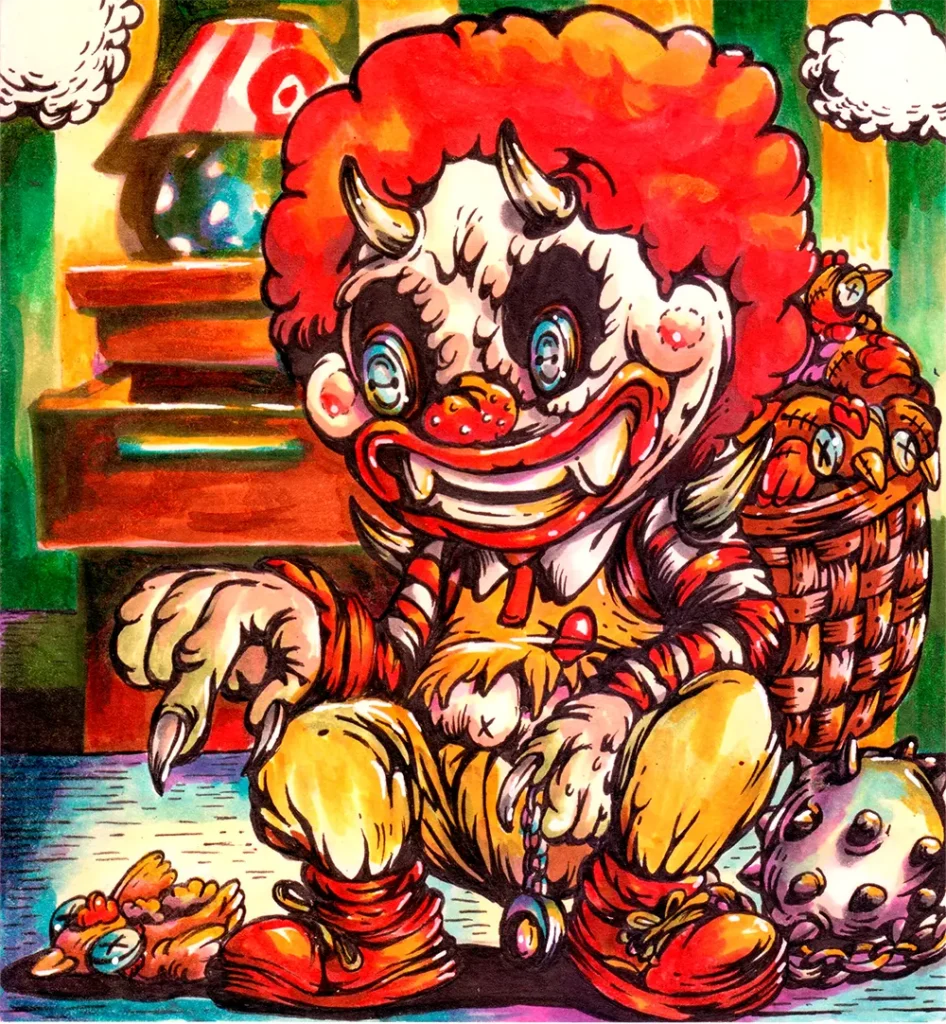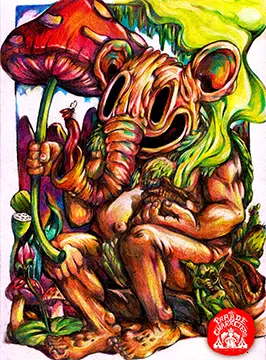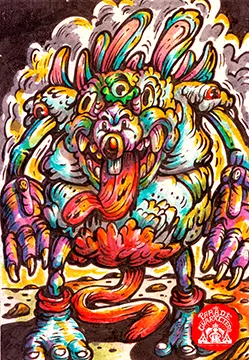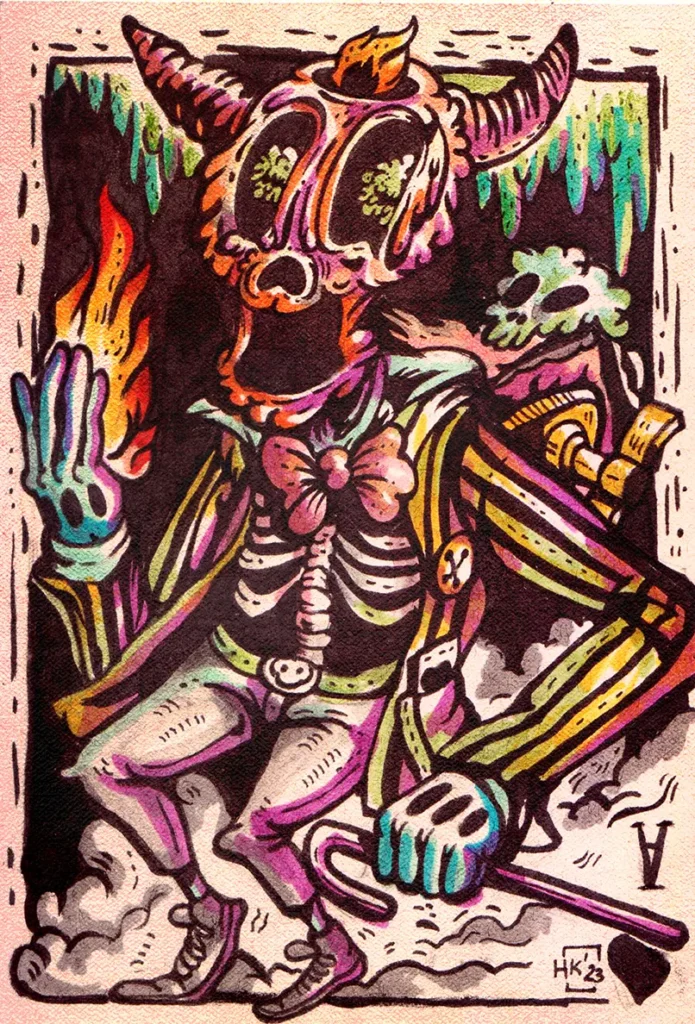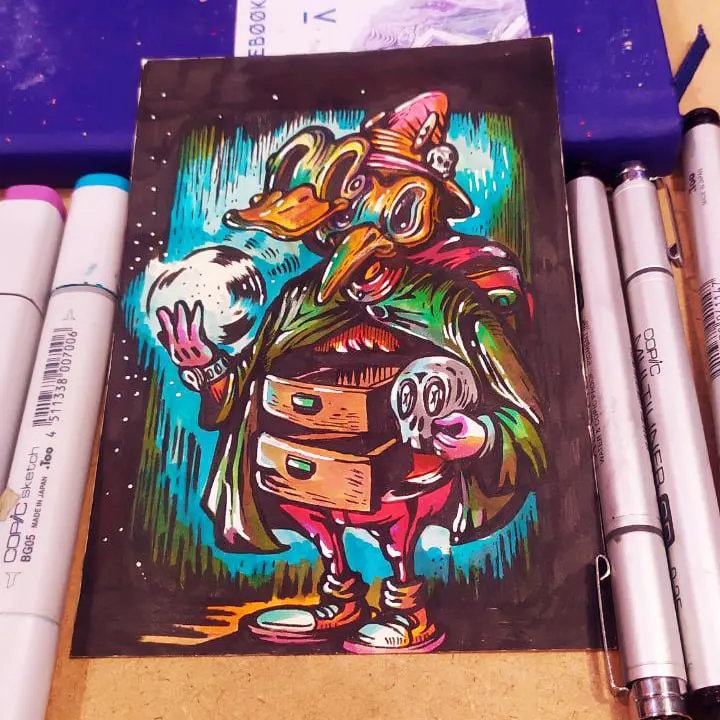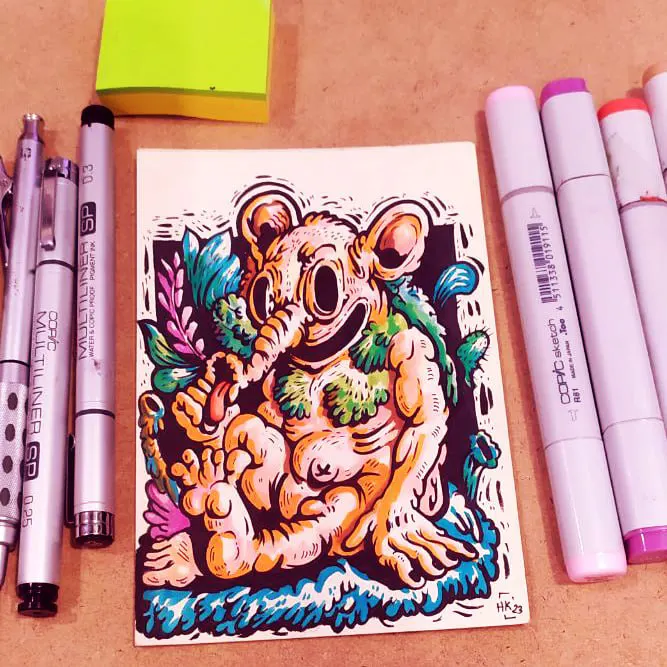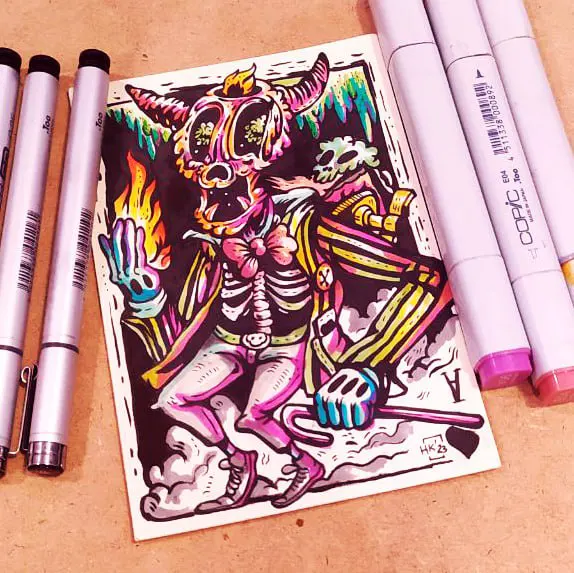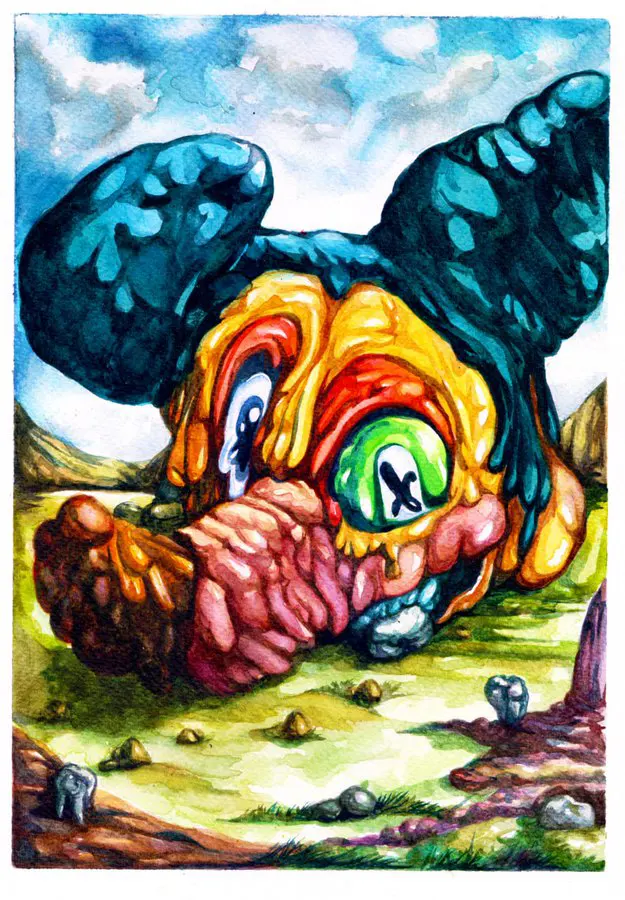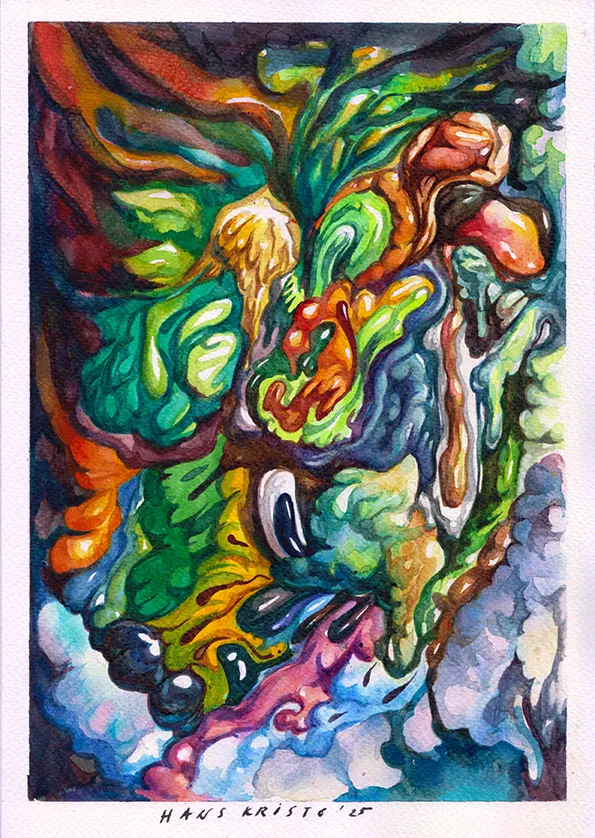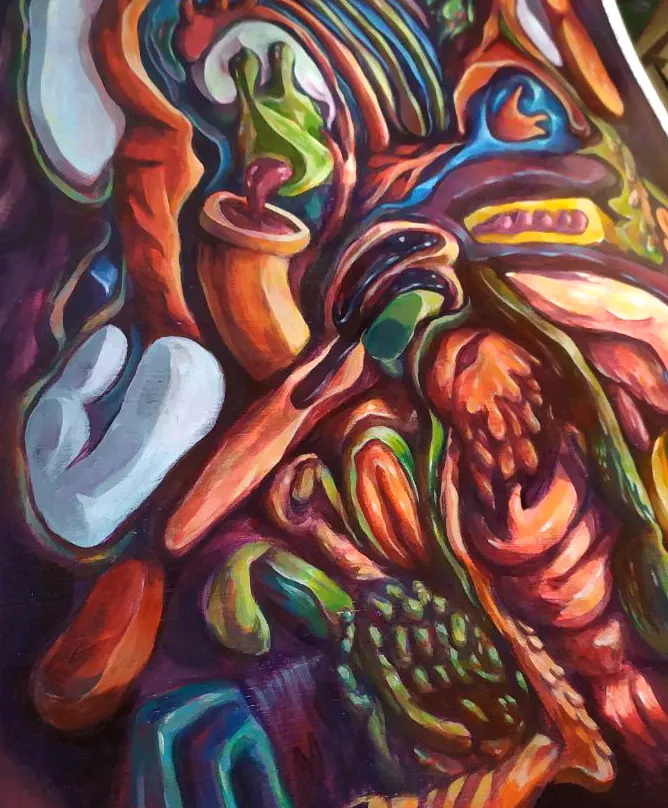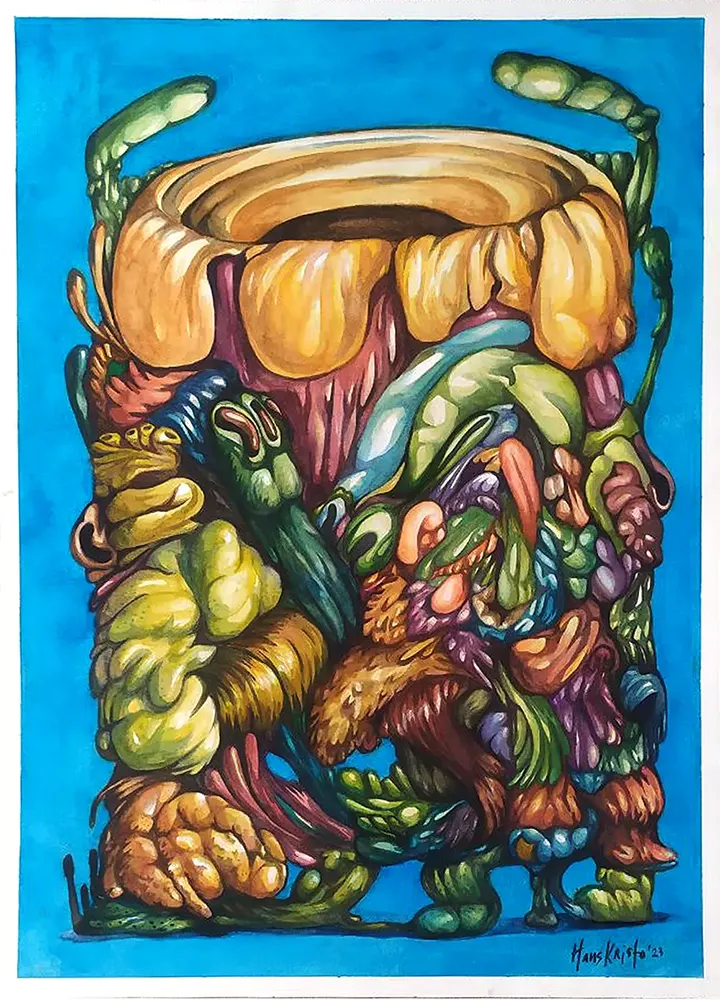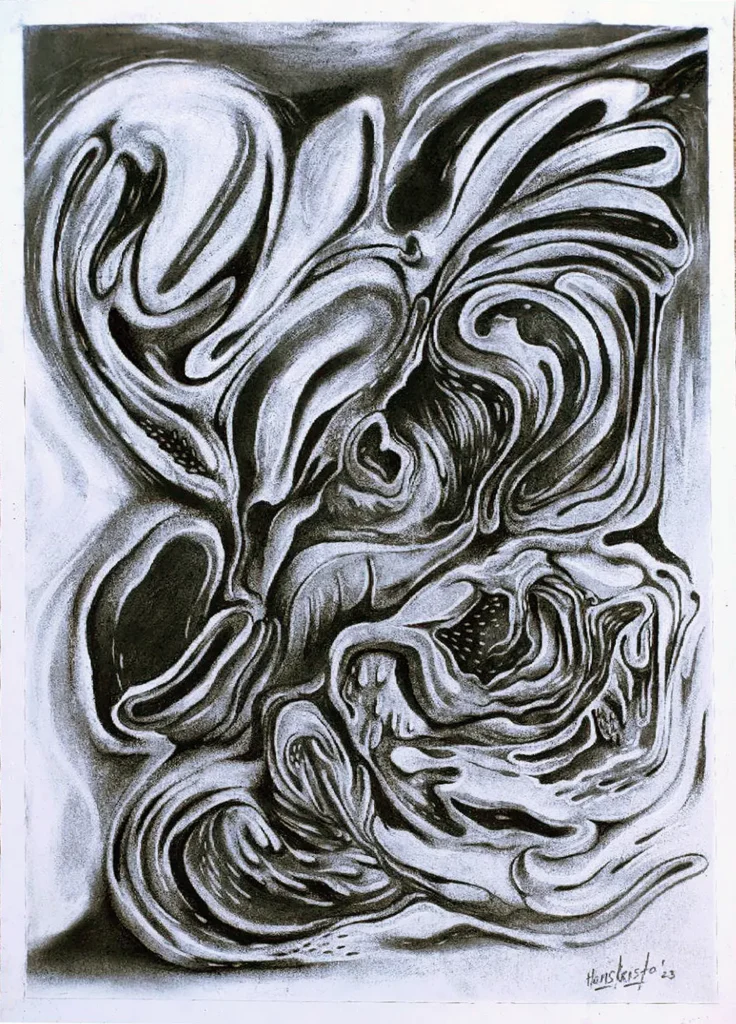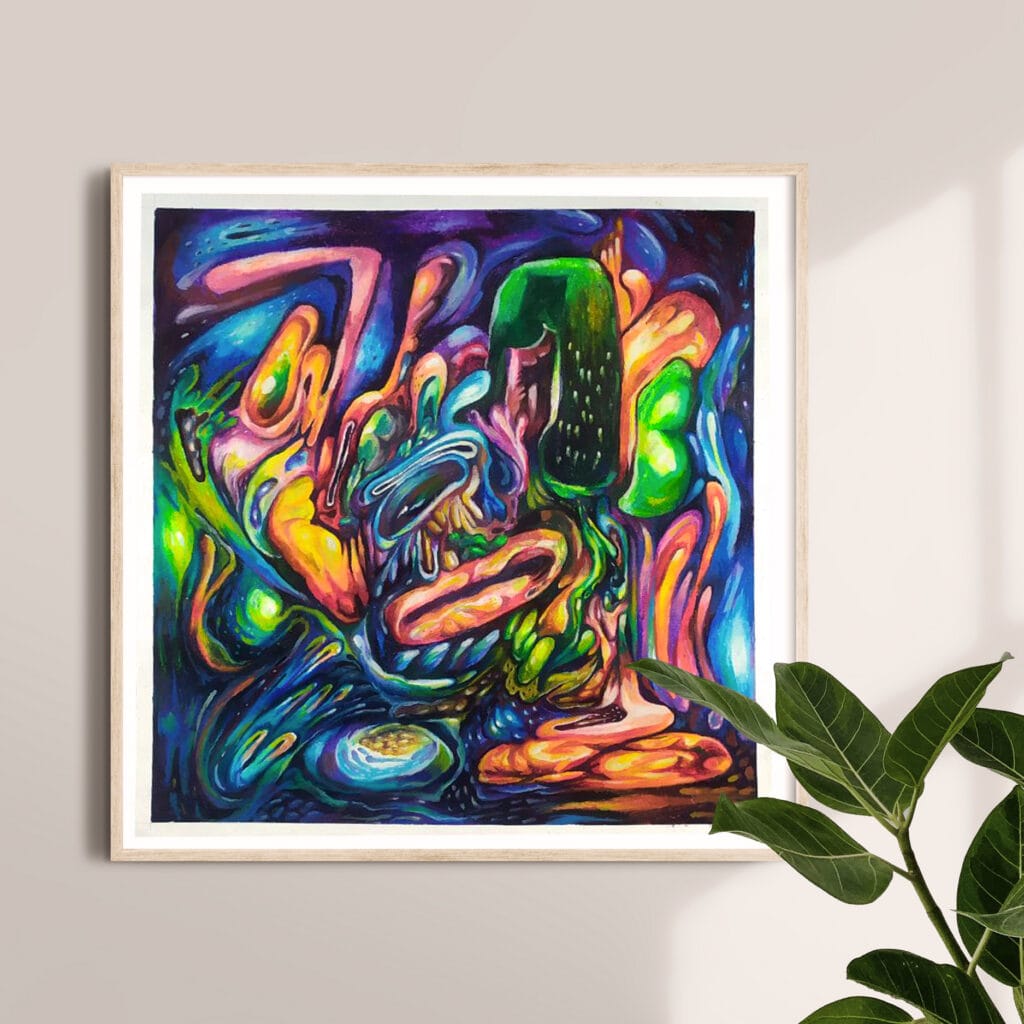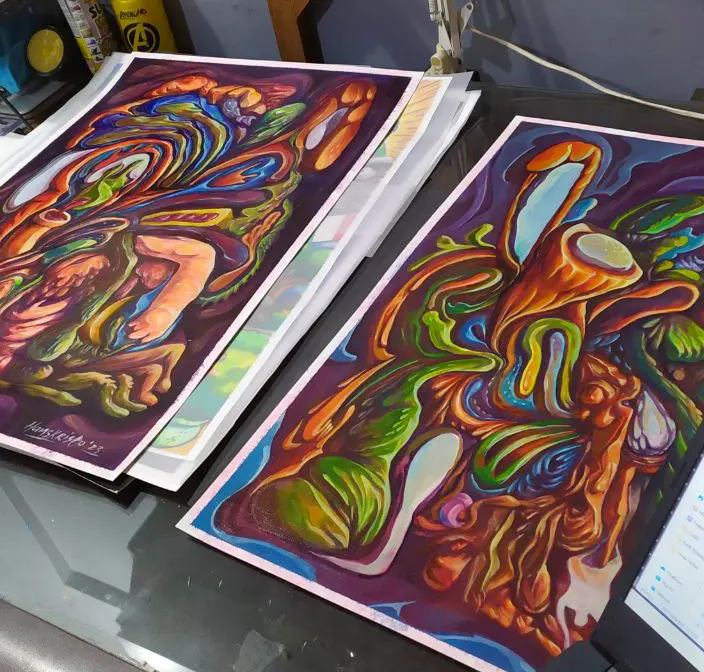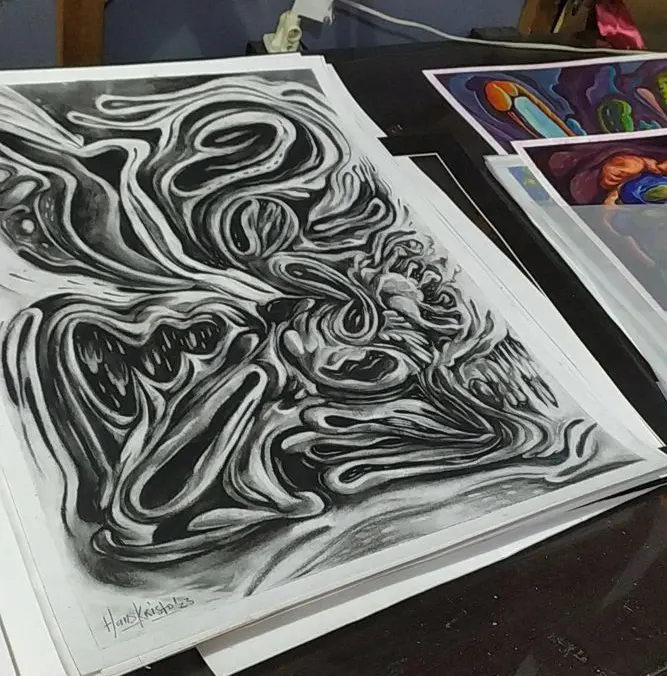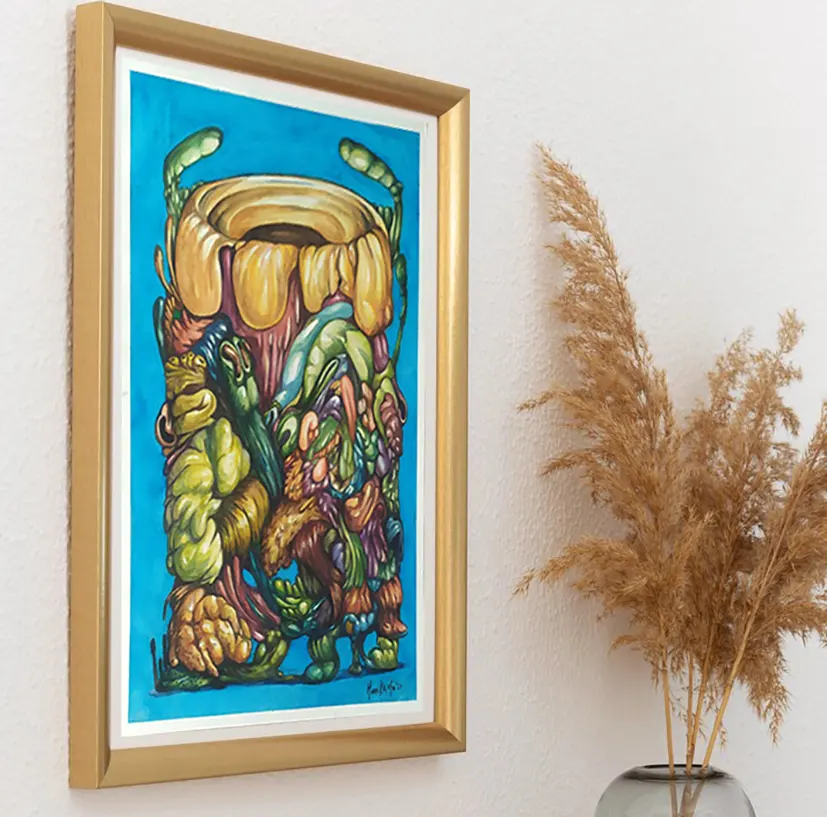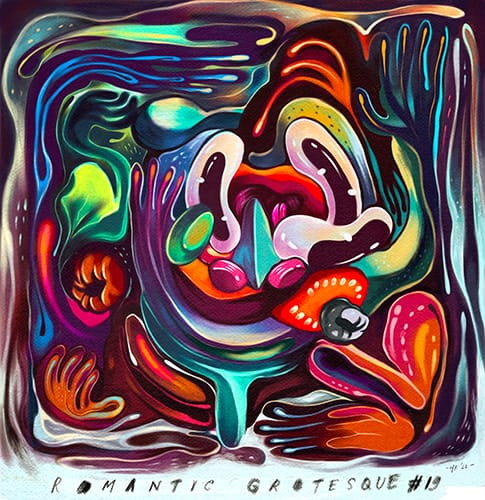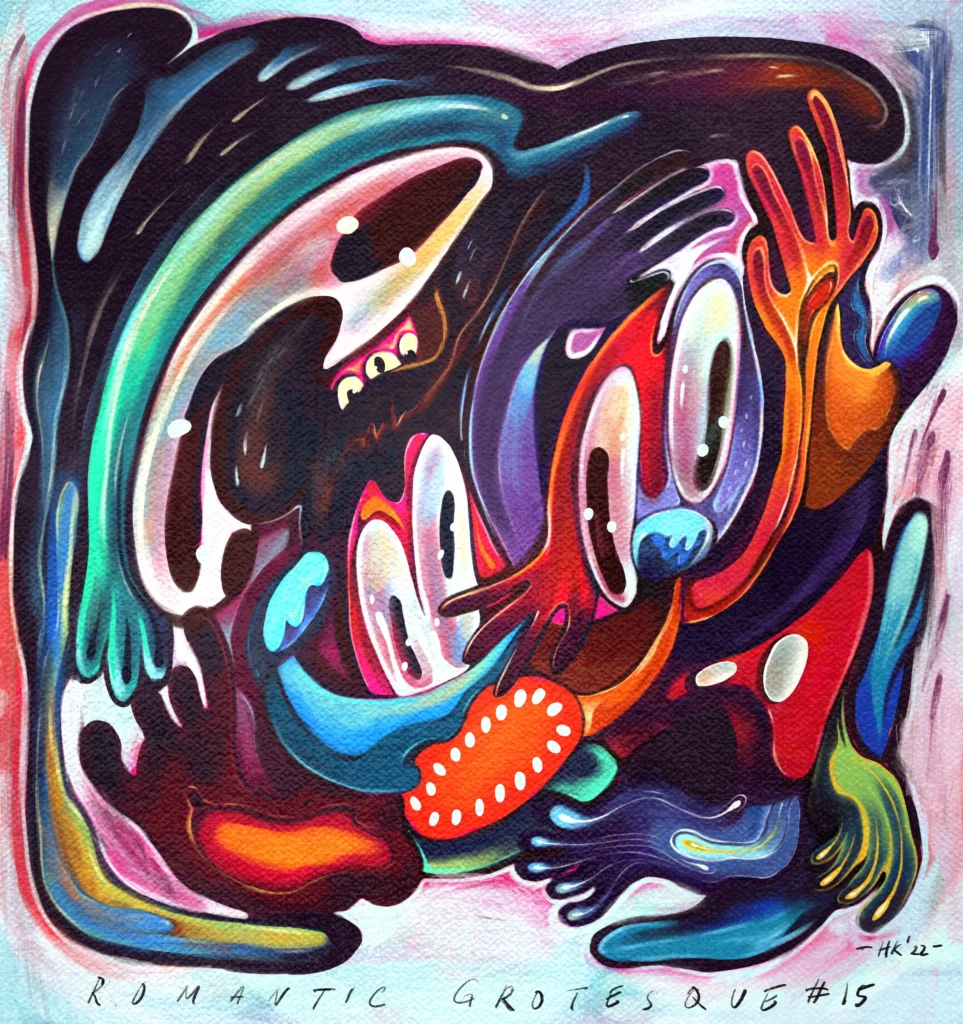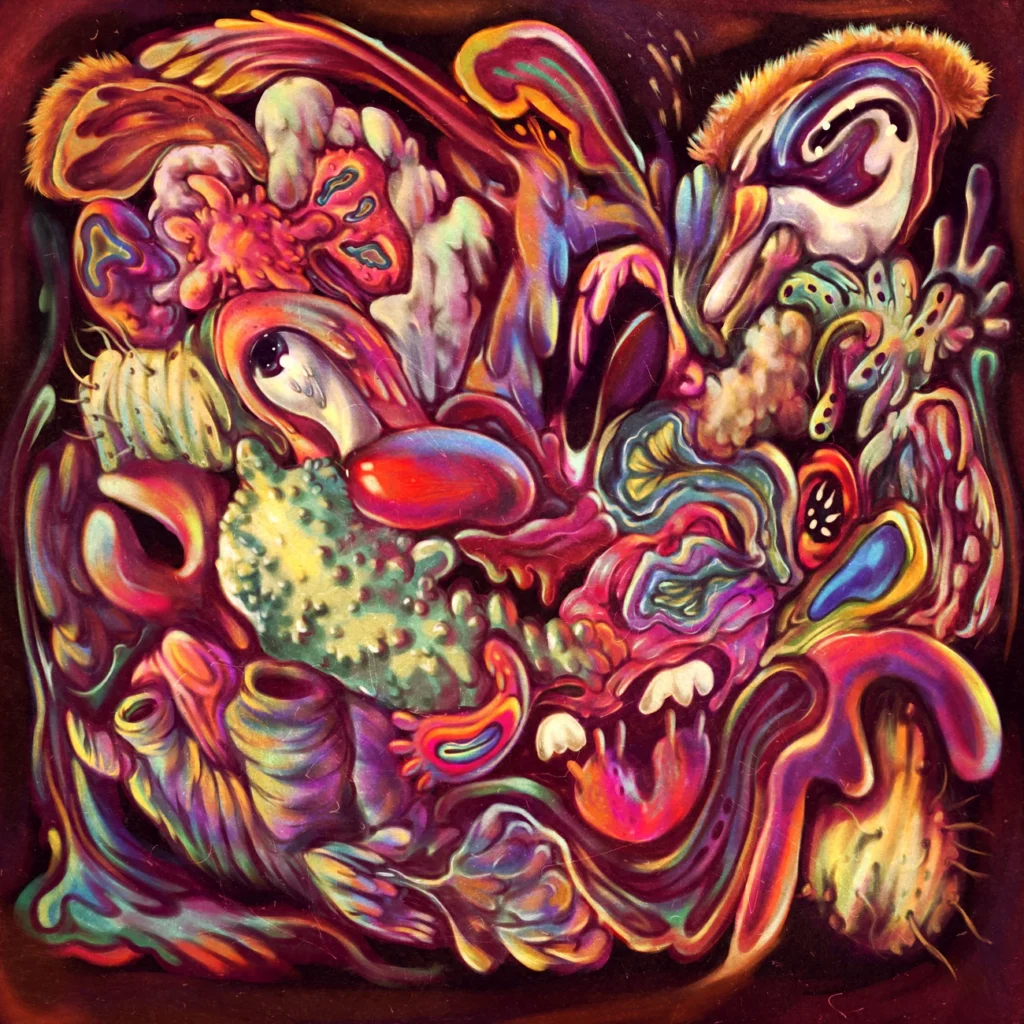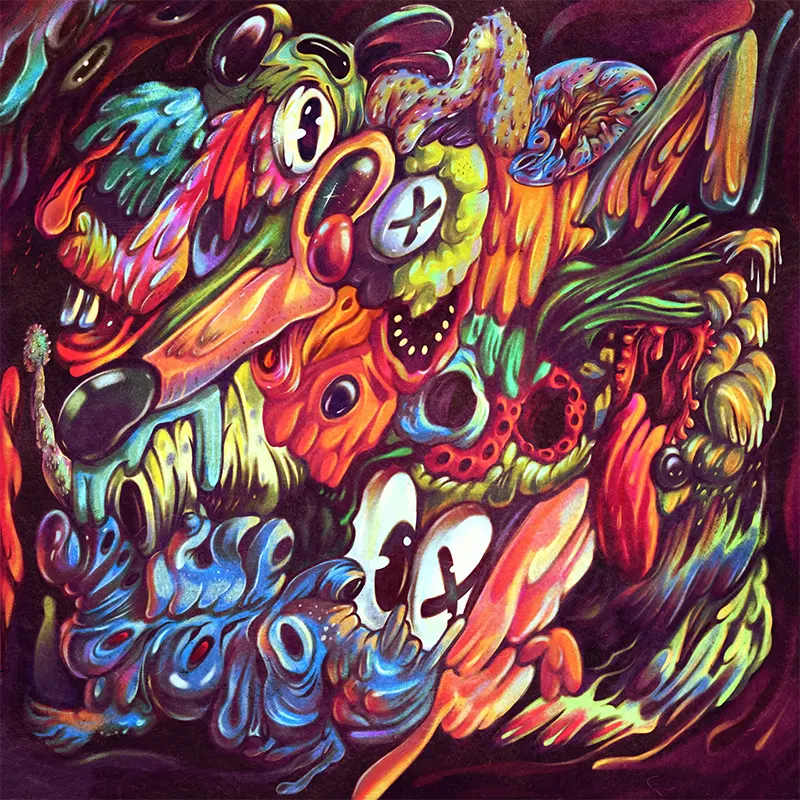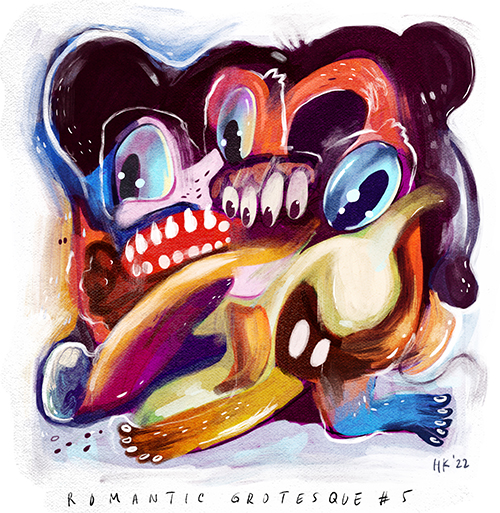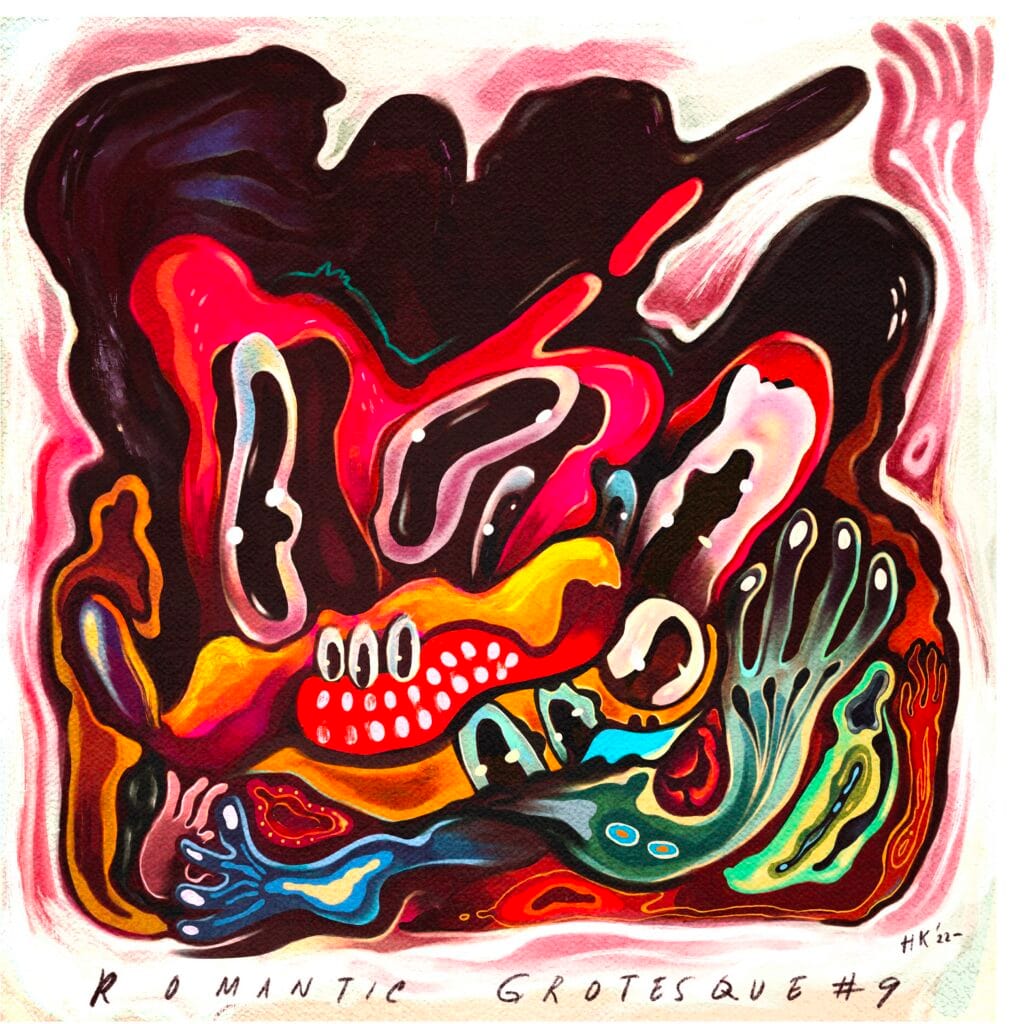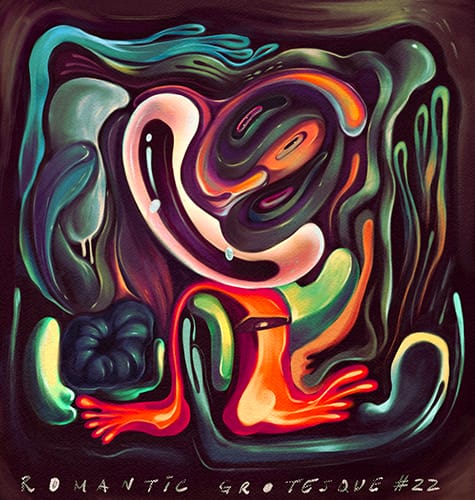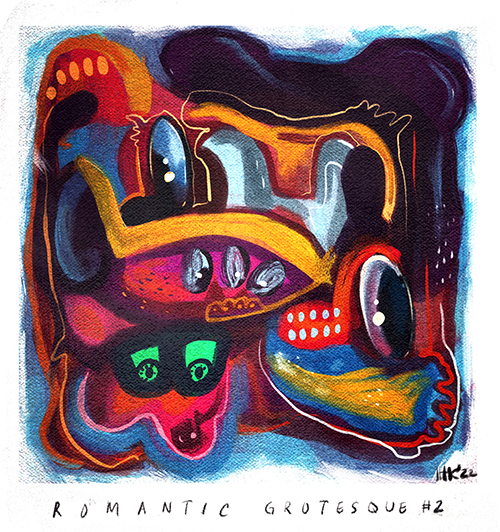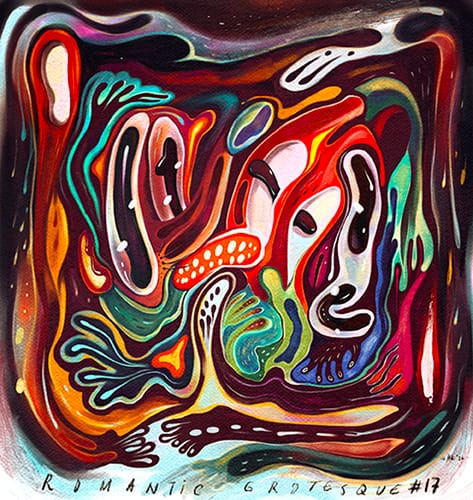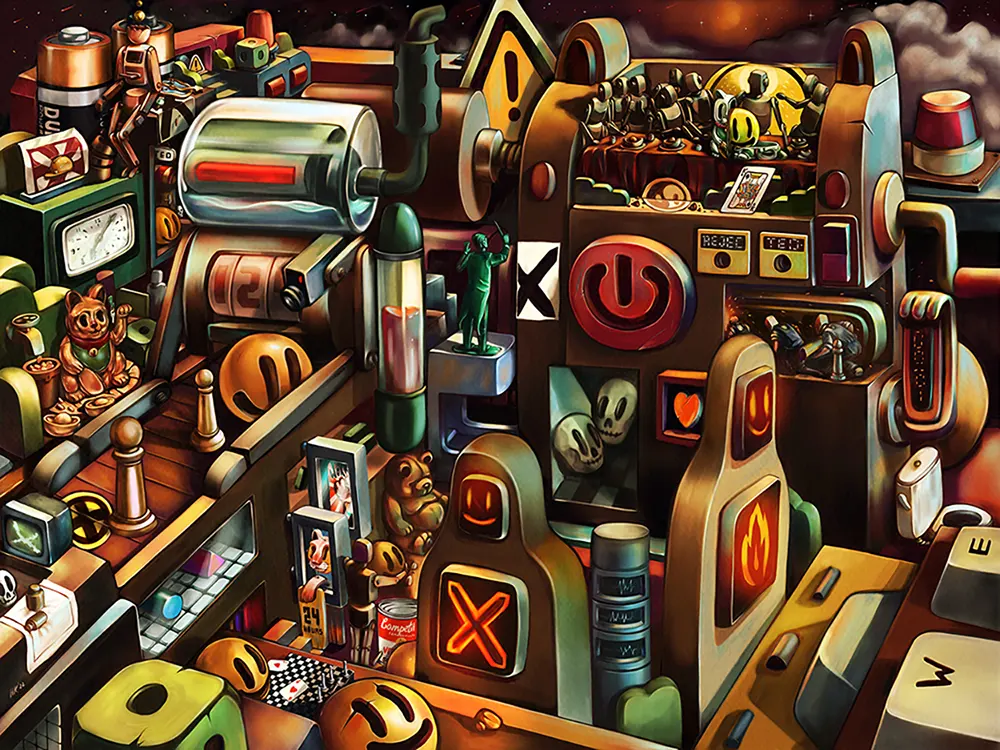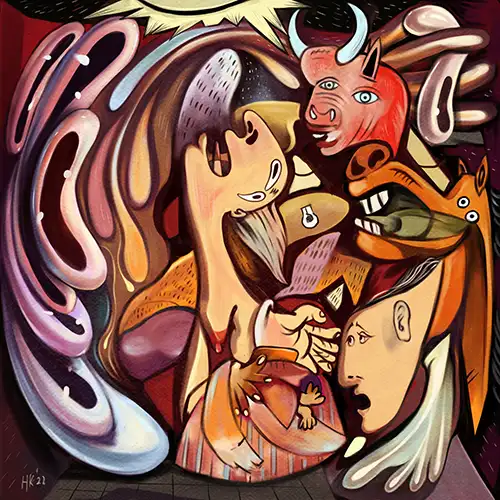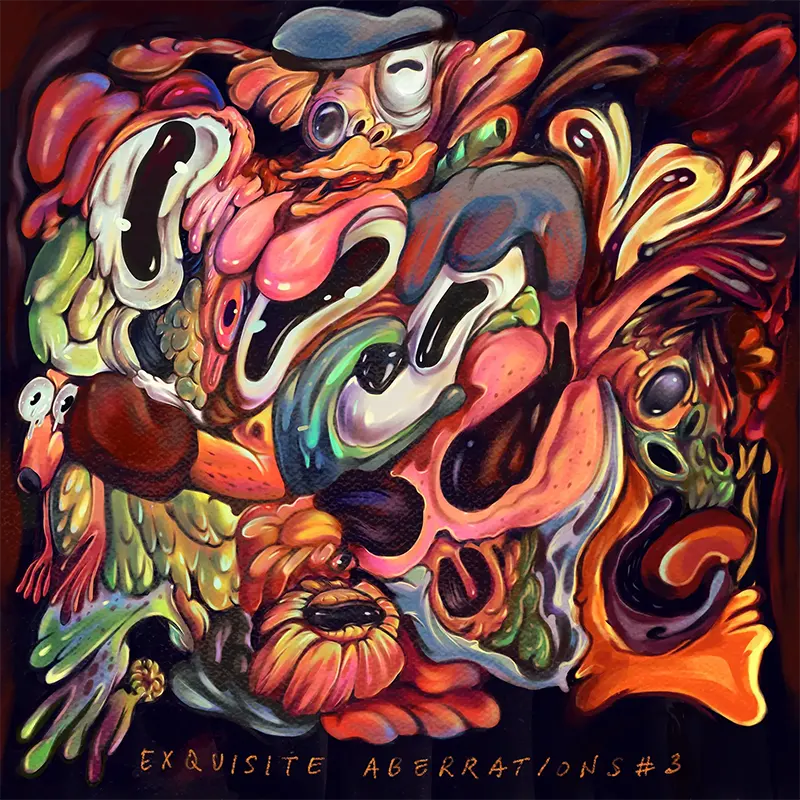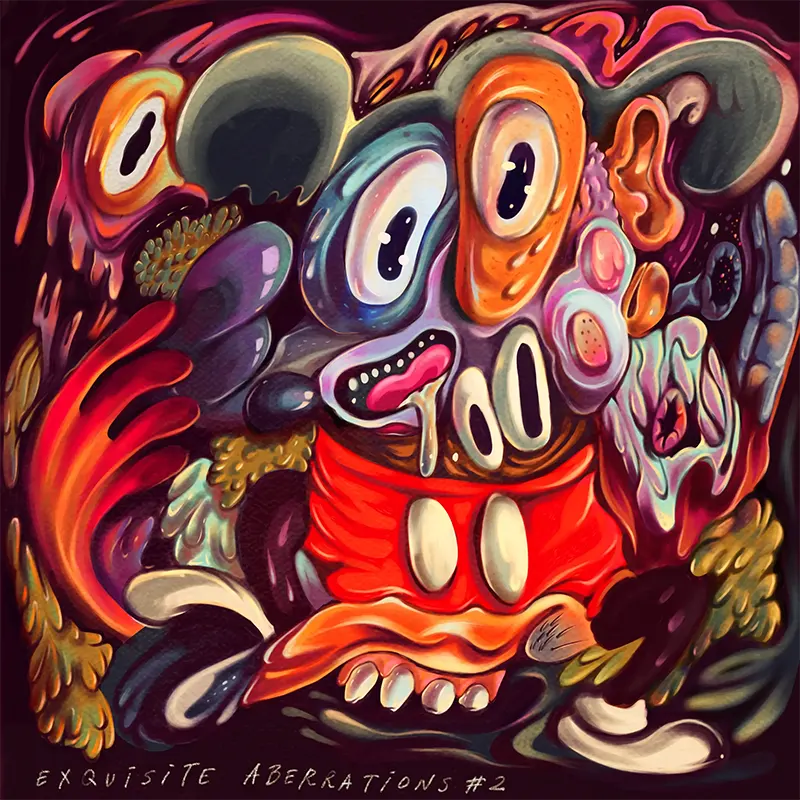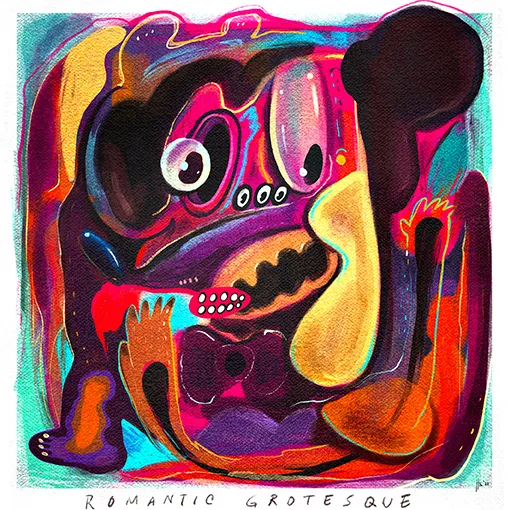THE MECHANISM OF MADNESS: BEYOND GREED AND FEAR
Reflections on Modern Humanity
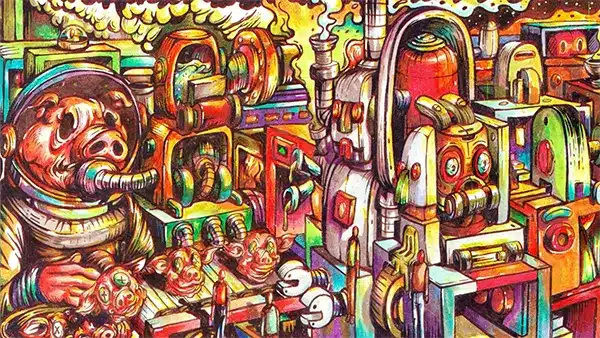
The Mechanism of Madness: Beyond Greed and Fear is a Pop Surrealism reflection on modern humanity, combining philosophical allegory with surreal visual metaphors.
The history of human civilization continues to undergo change and evolution. It never stops—not only giving birth to renewal, but also revealing recurring patterns. When viewed from a distance, it seems as though a single thread runs through time, repeating itself across the ages.
Human civilization is a fascinating paradox: complex, yet always captivating. We never seem to tire of trying to understand what lies hidden within the mind of this so-called exceptional being—humanity.
In the end, we see two paradoxical sides of human nature: opposing, yet at the same time complementary.
One side is primal instinct, while the other is the capacity for abstract thought. These two forces, like a subconscious dialogue, stand in opposition yet together form the wholeness of the human experience.
Human beings have a tendency to surrender to their basic instincts—spontaneity, emotional impulses, and intuition—leading us to think and act without logical consideration. This survival drive reflects both our animality and our natural essence.
On the other hand, humans possess an extraordinary capacity for abstraction: to think beyond material needs, to construct complex ideas, and to weave civilizations from intangible concepts—whether ideological, spiritual, or scientific—that allow leaps far into the future.
It is within this contradiction that the richness, complexity, and intricacy of human history becomes evident.
Fear and Greed: The Madness of Human Nature
If we wish to understand this complexity, we cannot ignore two fundamental aspects of human nature: the desire to speculate and the impulse to play. Speculative desire arises as both a drive for survival and an effort to grasp the future, while play is an innate instinct from birth that shapes the way humans learn about life.
This speculative instinct is not only present in personal life, but also permeates economic systems. It compels humanity to keep moving forward, to gamble with uncertainty, and to open space for new possibilities. Yet behind this drive always lurk two dominant emotions: fear and greed.
They are like two sides of the same coin, interconnected and inseparable. It is precisely these emotions that shape the way humans make decisions—from the smallest everyday choices to the great ones that can alter the course of the world. Even in modern society, we measure these forces through tools such as the fear and greed index, a reflection of collective psychology in finance and beyond.
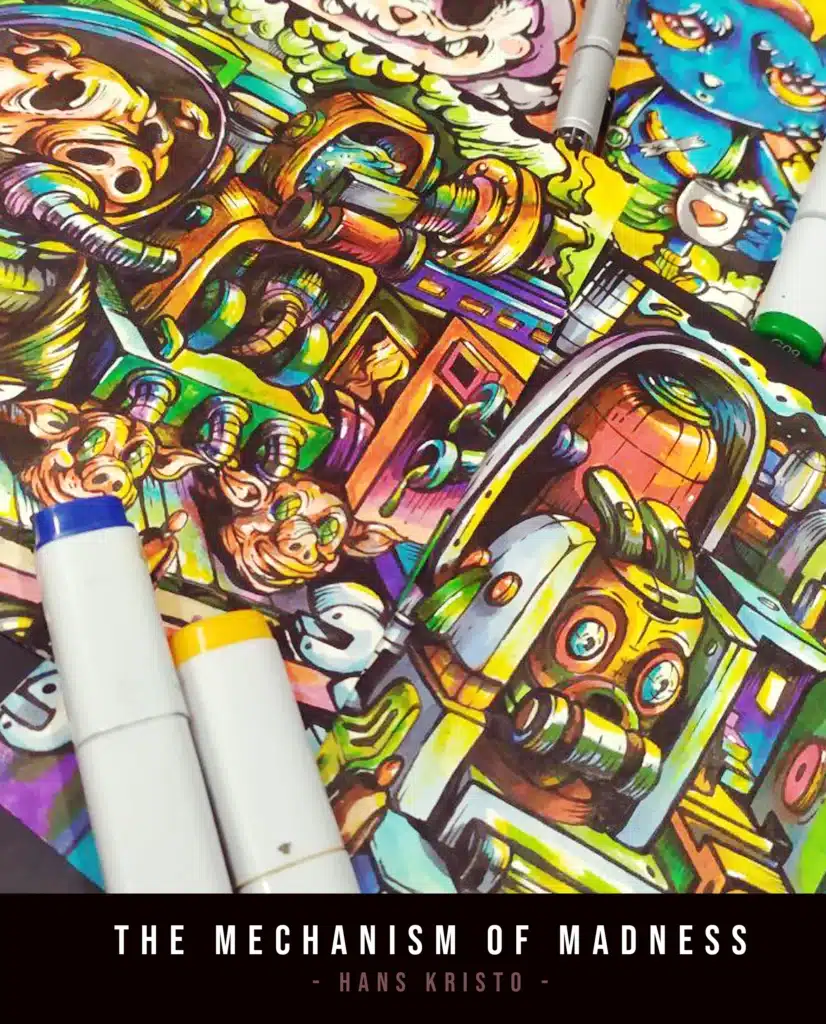
Beyond Greed and Fear: An Artistic Reflection
About half a year ago (2025), this reflection inspired me to create my work “The Mechanism of Madness: Factory of Greed and Fear.” An allegory as well as a commentary on how greed, avarice, and fear operate like tireless machines—spinning endlessly without pause.
This machine drives us, humanity, to keep moving forward in ways that are absurd, unconscious, and nearly impossible to escape. I manifested this work into two fragments:
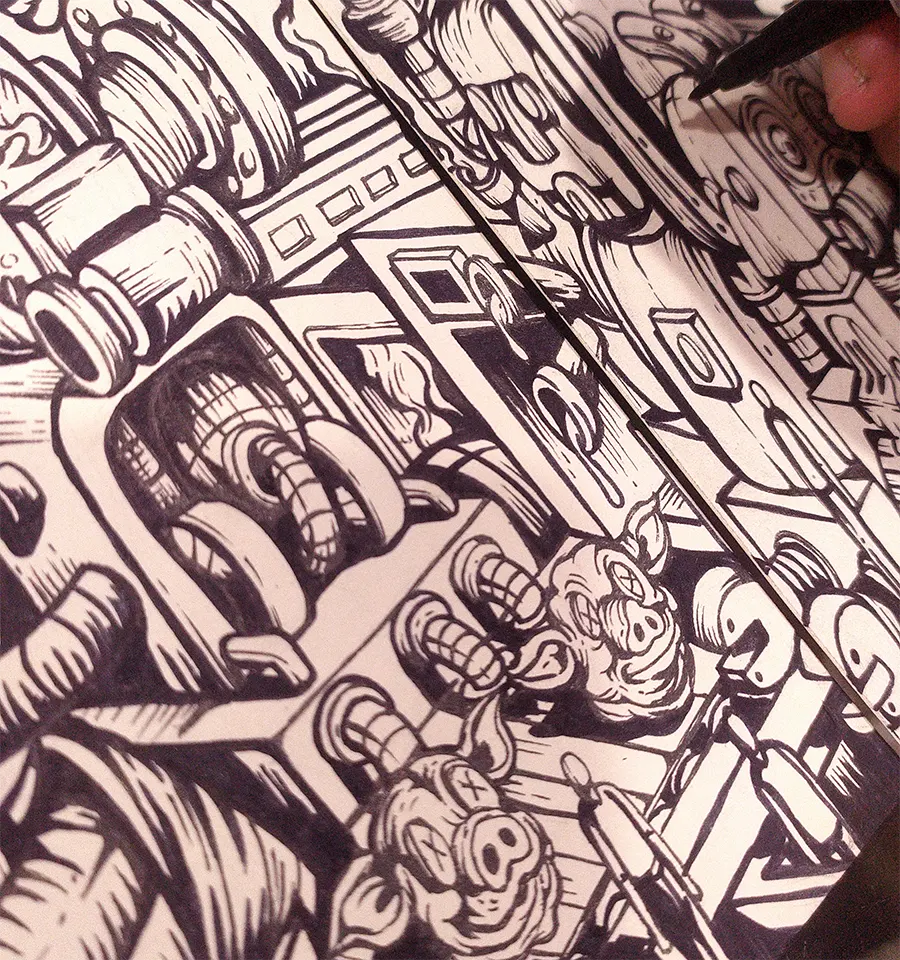
The Gluttonous Gear
Through the visual language of Pop Surrealism, The Gluttonous Gear is a depiction of human greed, avarice, and ego. I express this subconscious drive through the metaphor of the pig—an age-old icon of gluttony—forever regenerating and duplicating itself into new faces. It offers a false sense of satisfaction, causing us to lose ourselves and surrender control. This pig metaphor is then connected to the ever-turning wheel of production—a symbol of the relentless cycle of greed that never ceases to push humanity to repeat itself over and over again.
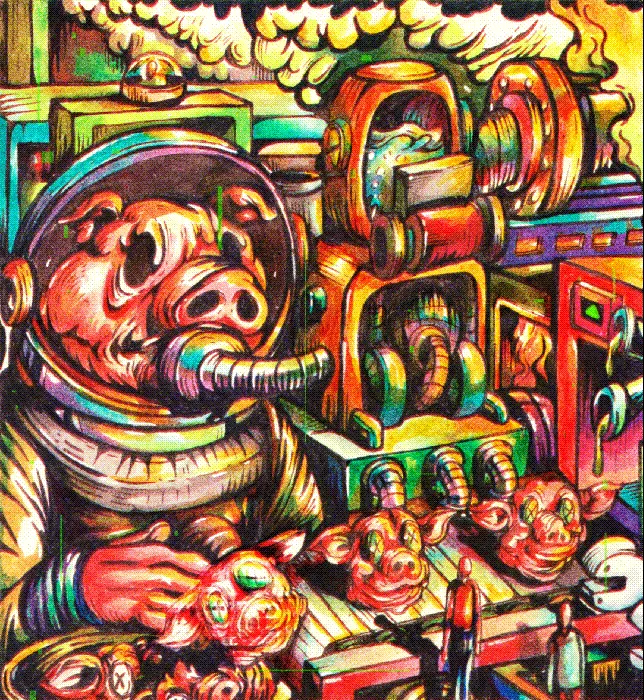
The Clockwork Tremor
The Clockwork Tremor is a representation of humanity’s natural fear. At first, fear arises as a spontaneous reflex to protect us from things that cannot be explained by logic—something vague, not yet present, yet demanding preparation. But in many cases, this fear transforms into a force that takes control of humans uncontrollably. I depict this fear through the icon of a robotic rabbit with an anxious face and a trembling body. The rabbit, a cave-dwelling creature known for its vigilance, is presented as a symbol of double awareness: it feels watched while at the same time anxiously watching its surroundings. Within that tension, it becomes trapped in an endless cycle of panic.
Together, these fragments form the madness of human existence: a cycle beyond logic, beyond reason, and beyond control.
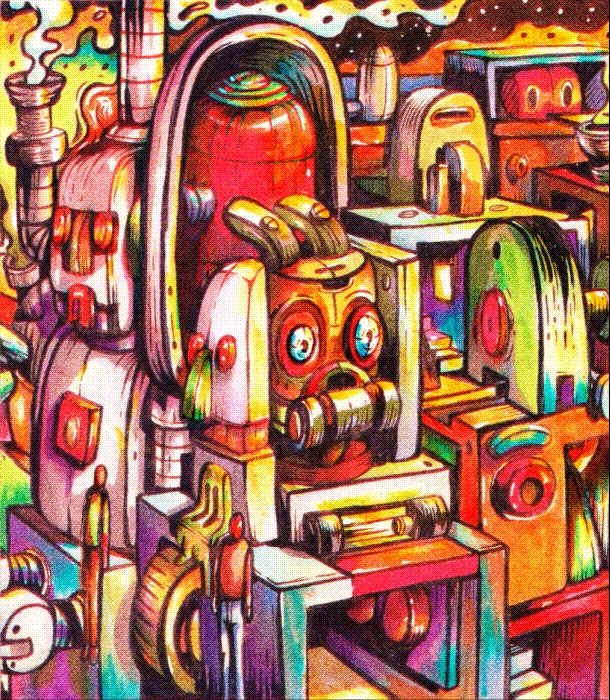
The Factory of Modern Existence
This surreal industrial landscape echoes the essence of Pop Surrealism—where absurdity, grotesque imagery, and symbolic narratives collide. In the bigger picture, these two fragments unite within a universe shaped like a factory—a production space for modern beings. Industralization lashes us without rest, forcing us to keep running, racing against time, until at last we drown and can no longer think clearly.
Amid this turmoil, there emerge Simulacrum Entities and Invisible Architects, fully aware of human weakness. They ride upon the subconscious, thrusting us into a labyrinth and casting dice upon the game of our lives. From this snare we are never truly free; all we can do is keep searching for an exit. This vision, with its theatrical scale and distorted allegory, embodies the Pop Surrealist spirit—turning the modern factory into a metaphorical stage of greed, fear, and the madness of existence.
"Amid this turmoil, there emerge Simulacrum Entities and Invisible Architects, fully aware of human weakness."
Closing Reflections: The Madness Beyond the Index
Yet the question remains: if greed and fear are machines, are we capable of shutting them down—or are we merely parts of the wheel itself? If this machine never stops, is our awareness strong enough to escape its game?
Perhaps true freedom lies in recognizing that we live within a perpetual cycle of fear and greed—the madness beyond the fear and greed index itself.
Thank you for taking the time to read this reflection and explore my work The Mechanism of Madness. If you would like to see more, I invite you to visit my other collection — for example, my Mixed Media Works — where I continue to experiment with form, texture, and narrative in new dimensions.
